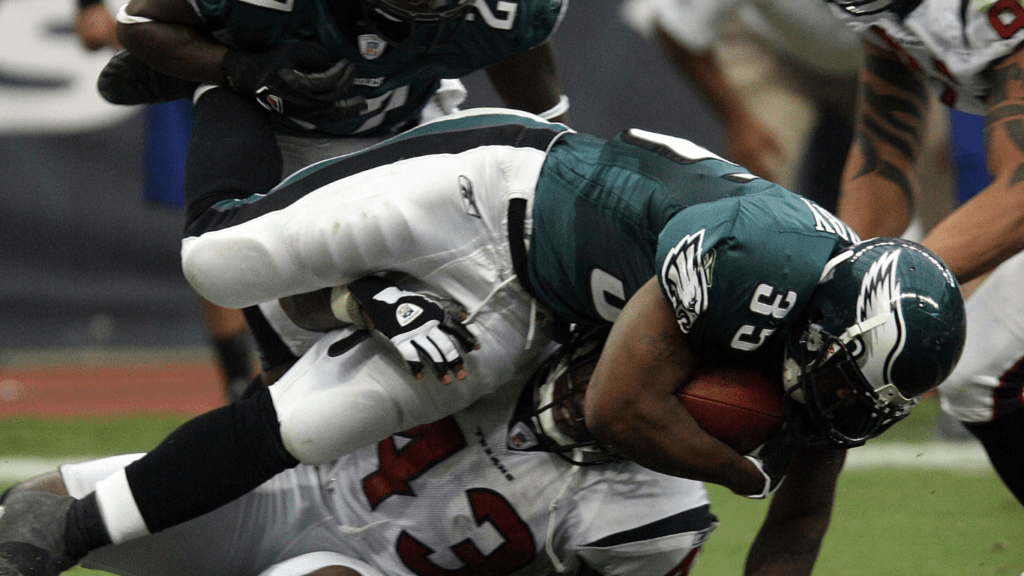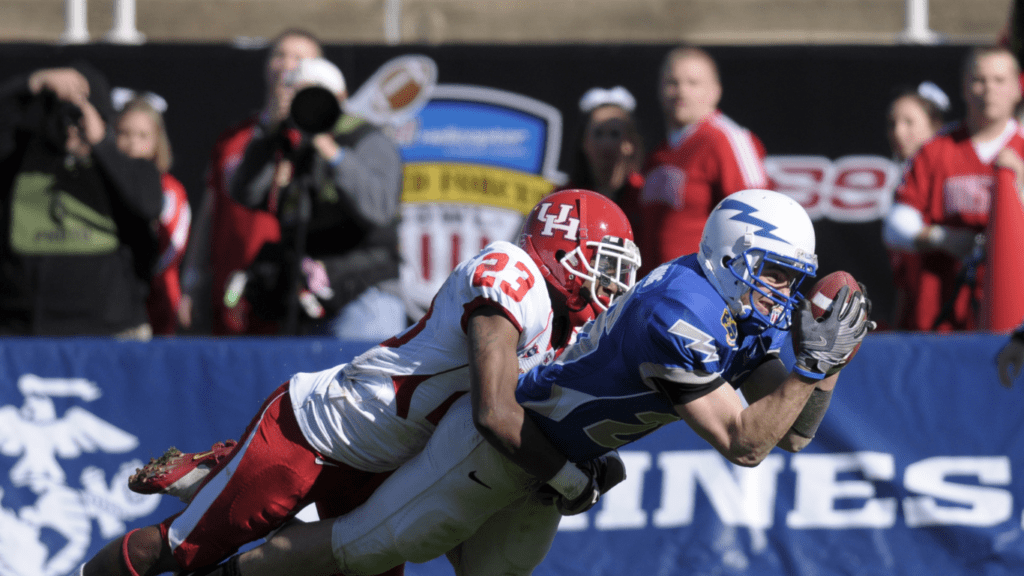When it comes to evaluating the performance of NFL running backs, one crucial metric stands out: Yards After Contact (YAC). As a seasoned sports analyst, I delve into the world of YAC to uncover the true grit and determination of these athletes on the field.
In this article, I’ll break down the significance of YAC in measuring a running back’s ability to power through tackles and gain crucial yardage after being hit. Exploring the nuances of YAC reveals the resilience and skill of top NFL running backs as they navigate the chaos of the game.
By dissecting the data behind YAC, I aim to shed light on the impact of contact on a player’s overall performance and highlight the standout performers in this key statistical category. Join me as we unravel the secrets hidden in the yards gained after the clash of titans on the gridiron.
Understanding Yards After Contact (YAC) in NFL Running Backs
Examining Yards After Contact (YAC) in NFL running backs provides valuable insights into their physicality and ability to break tackles effectively. It serves as a crucial metric for evaluating a player’s skill in gaining yardage even after encountering defensive pressure.
Analyzing YAC data allows me to pinpoint which running backs excel in maintaining momentum and elusiveness when faced with opposing players. By delving into the significance of YAC, I can better identify top performers in this aspect of the game and appreciate their resilience on the field.
Importance of YAC in Running Back Performance
Exploring the significance of Yards After Contact (YAC) in evaluating NFL running backs unveils critical insights into their performance. Assessing a player’s ability to gain yardage post-contact sheds light on their resilience and skill in evading tackles effectively.
Analyzing YAC data is pivotal in recognizing standout performers who excel in maintaining momentum and elusiveness when facing defensive pressure. Understanding the impact of contact on running back performance is essential in comprehending their physicality and capability to break tackles efficiently.
YAC serves as a key metric for gauging a player’s adeptness in maximizing yardage despite encountering opposing players. By delving into YAC statistics, I can pinpoint top performers who exhibit exceptional skill in navigating through tackles and sustaining their forward progress on the field.
Factors Impacting YAC
When analyzing Yards After Contact (YAC) in NFL running backs, it’s essential to consider various factors that can significantly influence this metric.
Player Strength and Power
I’ll delve into how a running back’s strength and power play a critical role in determining their YAC. Stronger players can often break through tackles more easily, allowing them to gain additional yardage after contact.
Power enables running backs to push through defenders and keep moving forward even when faced with opposition.
Tackling Techniques of Defenders
Understanding the tackling techniques employed by defenders is crucial in assessing YAC performance. Different defenders use varying techniques such as arm tackles, wraps, or hits, which can impact a running back’s ability to evade tackles and accumulate yards after contact.
By knowing the defensive strategies in play, we can better comprehend the challenges running backs face and how they overcome them to secure extra yardage.
Techniques Used for Analyzing YAC
Exploring the techniques employed to analyze Yards After Contact (YAC) unveils valuable insights into the performance of NFL running backs. By delving into the methods utilized for evaluating YAC, one can gain a deeper understanding of the agility, strength, and resilience of these athletes when facing opposition on the field.
- Video Analysis: Reviewing game footage is a fundamental technique for assessing YAC. By scrutinizing how running backs navigate through tackles, maintain balance, and generate additional yardage, analysts can decipher the effectiveness of their movements post-contact.
- Statistical Comparison: Comparing YAC metrics across different players allows for a comprehensive assessment of their performance. Analyzing factors such as average YAC per game, broken tackle rates, and yards gained after initial contact provides a quantitative basis for evaluating a running back’s ability to excel under defensive pressure.
- Physical Attributes Evaluation: Evaluating the physical attributes of running backs, including speed, strength, and agility, is crucial for understanding their YAC potential. Assessing how these attributes contribute to their capability to break tackles and evade defenders sheds light on their effectiveness in gaining yardage after contact.
- Defensive Tackling Analysis: Examining the techniques used by defenders to tackle running backs is essential for dissecting YAC performance. Understanding how defenders approach tackles, whether through arm tackles, wraps, or other methods, provides insights into the challenges running backs face and the strategies they employ to overcome defensive pressure.
By employing these techniques to analyze Yards After Contact (YAC), analysts can paint a comprehensive picture of a running back’s performance, highlighting their ability to thrive under challenging circumstances and secure critical yardage post-contact.
YAC Comparison Among Top NFL Running Backs
Exploring the Yards After Contact (YAC) metrics among the elite NFL running backs provides valuable insights into their ability to excel under pressure and gain crucial yardage post-contact. Understanding how these players perform in challenging situations sheds light on their resilience and skill in maneuvering through tackles.
Analyzing the YAC data of top NFL running backs unveils standout performers who showcase exceptional physicality and agility in breaking tackles and maintaining forward momentum. By comparing YAC statistics across players, we can identify those who consistently demonstrate the tenacity to secure additional yardage despite facing defensive pressure.
Examining the YAC metrics among leading NFL running backs highlights the significance of contact and physical strength in their gameplay. By delving into how these athletes navigate through tackles and evade defenders, we gain a deeper appreciation for their ability to thrive in demanding game situations.
By studying the YAC performances of top NFL running backs, we can differentiate between those who excel in elusiveness and power after contact, providing a comprehensive view of their influence on the field. This analysis allows us to recognize the players who excel in maximizing their yardage post-contact and contribute significantly to their team’s offensive success.






